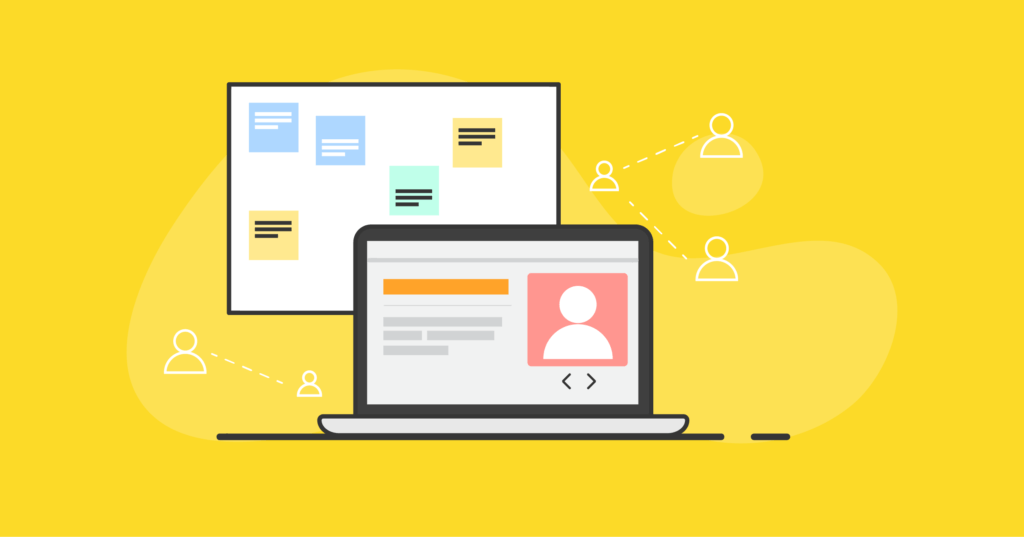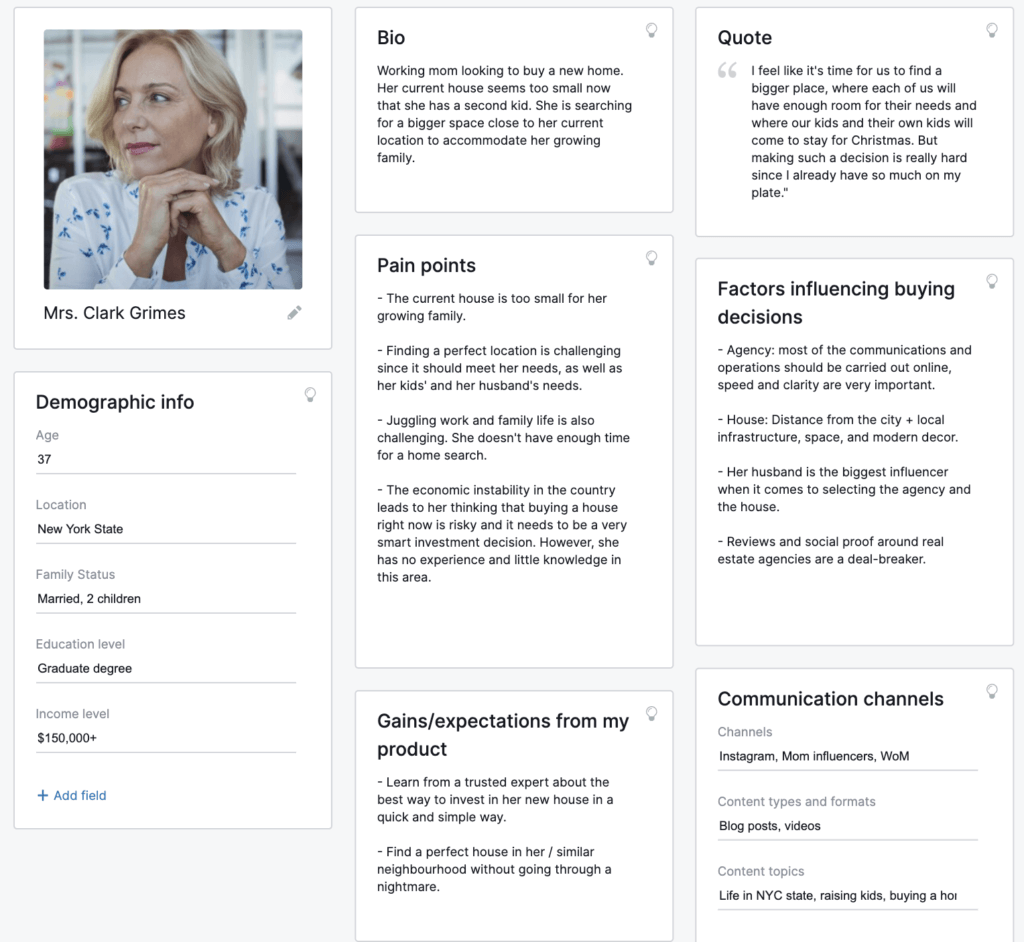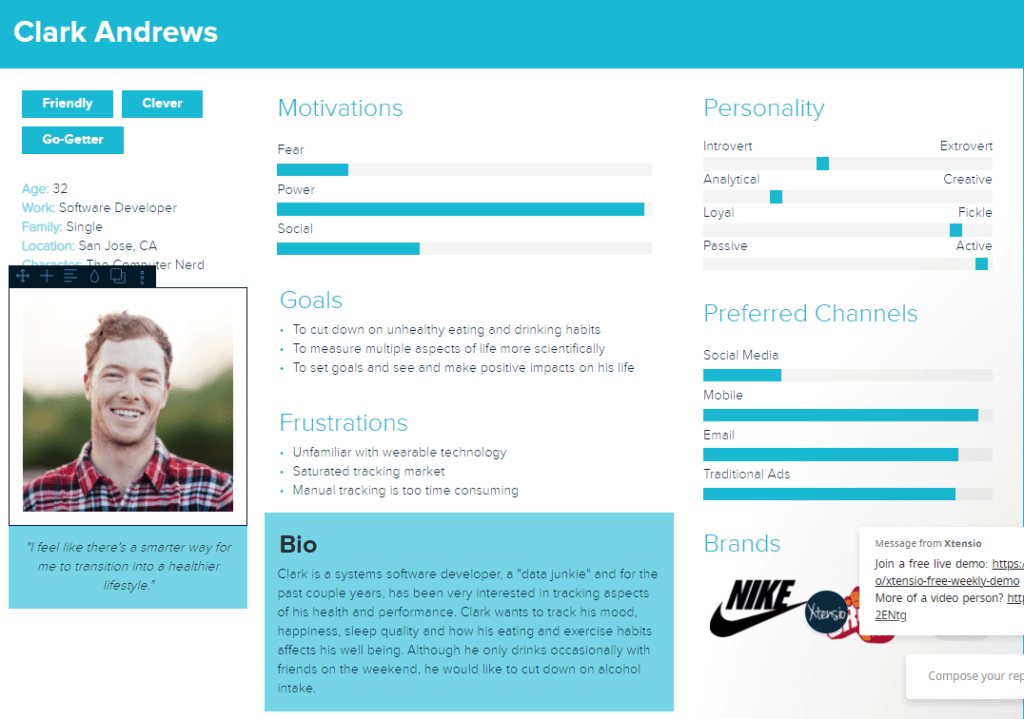Customer Personas: A Definitive Guide
Getting to know your customers is the baseline for marketing these days. It's not as easy as simply asking them what they like, what they don’t like, and how you can help them. It's important to truly learn their ways – and that takes strategy. Last week, we dove into how customer persona mapping can be helpful in bringing the customer into not only your marketing decisions but product and development as well.
Getting to know your customers is the baseline for marketing these days. It’s not as easy as simply asking them what they like, what they don’t like, and how you can help them. It’s important to truly learn their ways – and that takes strategy.
Last week, we dove into how customer persona mapping can be helpful in bringing the customer into not only your marketing decisions but product and development as well. This week, we look a little deeper at what those customer personas look like.
As it sounds, a customer persona is important in finding out what makes your customer tick.
Let’s define and explain customer personas so you can be a better marketer. Stick around until the end for some templates and examples. Let’s dive in!
What is a Customer Persona?
In a nutshell, a customer persona is a semi-fictional example that represents the key traits of a large segment of your audience based on the data you’ve collected from user research and web analytics.
Buyer personas help you understand your customers (and prospective customers) better. This makes it easier for you to tailor your content, messaging, product development, and services to meet the specific needs, behaviors, and concerns of the members of your target audience.
Customer personas give you insight into what your prospective customers are thinking and doing as they weigh potential options that address the problem they want to solve.
For example, the stats from Custom Logo Cases show that buyer personas can have a huge impact on conversion rates. Email open rates can increase by 2-5 times. Companies using personas have seen website traffic increase by 210%. Top-of-funnel inquiries generated through persona-based campaigns increased a whopping 721%
And…
82% of companies using personas can improve and make a focused value proposition. 58% of content B2B marketers say audience relevance is the most important factor when determining content marketing effectiveness.
Customer personas are not just for marketers, they are equally applicable to any team member that can benefit from better knowing their customers. Product engineers, UX designers, or product leadership teams that want to create a persona will benefit from the connection.
What do you get out of customer persona? Data. Data about your customer and your future.
- Quantitative data: information you can calculate, measure, and count about your customers.
- Qualitative data: subjective data on how customers really feel using customer interviews, focus groups, and ethnographic research.
Customer personas also help you provide segments and profiles about each data point, giving product use cases the information they need to implement growth into your company.

Types of Customer Personas
There is not one single customer persona. Several different customer types exist within the same audience, all with moderately different interests.
Typically, there are three main personas to consider for the different types of people engaging with your business.
- Buyer persona: represents your ideal target customer to purchase your product or service. Because they have the highest relation to your revenue, they play a significant role in your marketing strategies, and sales funnel.
- User persona: represents the users or the customers using your product or service. You use these personas to guide product features and design.
- Website persona: represents all the visitors your website is intended to serve. They help guide design and include present customers, clients, investors, leads, and partners.
These three types of customer personas will allow you to visualize a solid marketing funnel. With these profiles, you can start to reap the benefits of creating your own buyer personas.
Benefits of Creating Customer Personas
You may already be seeing some benefits of creating a customer persona sprinkled throughout this article. Customer personas can provide value and insight to your business. Here are some of those benefits and all the departments it can help:
- Aligns team members around a customer-centric mission.
- Brings customer needs to the forefront with more opportunities to serve them.
- Aids in product development by creating features that help them achieve desired outcomes.
- All teams can prioritize updates, campaigns, and initiatives saving time and resources.
- Customers lead decisions instead of the other way around.
Having a persona can help identify problems to solve when developing new products and services. With guidance like that, you can also predict early signs of churn.
It can also enable marketers to personalize messaging and marketing content.
Personas can also drive employee connectivity. Align your teams with collaborative target information. Persona development is an effective way to create a customer-centric team that scales for growth.
Ultimately, on the whole, your entire team will be better equipped to serve customers and deliver a better experience. And, when customers are happy, they keep coming back. Without a properly built customer persona, every angle of your product development process, user experience, and marketing campaigns could be misled.
There are many ways to obtain information about your customers, and you will learn more and more about them as you provide services for them – but wouldn’t it be nice to be prepared with the knowledge about how to help them?
Here’s how to create a buyer persona that helps you understand your customer.
How to Create a Customer Persona
Now that you’ve heard about the benefits, you may be ready to create your own customer personas. It’s not as hard as you may think.
A customer persona can be created through detailed research, surveys, and interviews. This includes customers, leads, and anyone who aligns with your target audience. Feel free to step outside of your typical target and see who else can fit.
Key elements of a properly filled out buyer persona include answers to these questions:
- What does a typical customer do? What does their typical day look like?
- What are their frustrations and customer pain points?
- What are they seeking to accomplish?
- What are they sharing online?
- What images can you compile about them?
Here are some helpful methods to develop your own customer personas:
1. Start with your own network
Comb through your contacts database to locate trends, including likes, how visitors find you, where they visit on social networks, and what they download. You can send out a survey to loyal customers, supporters, and referral partners.
A great place to start is your social media accounts. You can also visit your email database, groups you’re involved in, and your partnered communities. Each place your visit, you will see connections that help to shape your persona database.
2. Utilize your website
Use a contact form or pop-up to capture important information on your site. If a visitor is perusing your features or pricing page, you can include live chat to answer any information they request. If a visitor is reading your blog, you can install a modal or exit intent pop-up to ask if they’d like to download similar content.
WordPress has a ton of great resources for form collection.
3. Feedback is your best friend
Your sales team’s feedback on leads they’re interacting with (as well as customer support’s interaction with customers) is incredibly valuable. Whether this feedback is positive or negative, it can help you understand your target audience even better. Interview customers and prospects to understand what they like about your brand.
Send post-purchase surveys, ask questions on social media, and be open to responses that can be added to your persona database. With these answers and feedback responses, it will help you avoid the deadly and silent killer—churn.
Let’s take some action steps to create a killer customer persona, so you don’t even have to entertain the idea of churn.
Here’s how to create a customer persona profile, step by step:
- Create a basic persona profile. This includes basic demographic information and can be done in your sales CRM, as a spreadsheet, or in a persona template tool. Information to include is name, background, profession, hobbies, social networks, and lifestyle.
- Build out your persona’s details. Add additional information to each persona, including what motivates them, what they share, and what problems they are trying to solve.
- Include your team. Ask them to add additional profile information to your customer persona. Having different perspectives from your team members can help amplify your persona profiles. Have them include any information that may enhance the profile.
- Craft a message outline. Based on the information collected, create a message for your persona built around their likes, lifestyle, and problems. It should be specific and personal.
After you’ve crafted your customer persona profile, you are now ready to begin messaging them. It’s important to include their likes and interests and personalize the message based on what you’ve learned.
Here are some tools you can use to get your customer persona started.
Customer Persona Template
Using a template is helpful if it’s your first time creating a customer persona. The good news is that you have a lot of options to choose from.
Just like any other template, a customer persona template gives you requirements to fill in to better understand your customers. Use persona mapping to guide you to the right customers.
You can follow these guidelines if you’d like to create your own template.
Visit their social profiles
Every customer has a digital footprint. If you are looking to truly connect with your customers, find them online! We don’t recommend becoming a stalker, but understanding where they post and what they share is important to your bottom line.
Where do your customers share on social networks? Do they read articles and share images that pertain to your product or service? Do they chat about local or global news? Is there a pattern to their behavior on social that you could intersect with your brand?
When you are where your customers are, it’s easy to create a persona.
Speak their language
While you’re visiting their social profiles, find out how they interact. What does engagement look like to your customer? Do they engage with hashtags, GIFs, or emojis? Are they sharing trending news stories instead of videos of cats?
By learning how they are sharing on social media, you can personalize your engagement to better interact with them. Again, don’t clone their language, but it’s easier to connect with someone when you’re on their level.
Insert funny quote of “get on my level.”
Partner with people your personas love
Partner up! There is nothing more powerful than a solid partnership. Combining forces with a company or an industry influencer will speak volumes to the customer.
Trust is built through partnerships, and word of mouth travels fast. If you can surround yourself around good brands that support you, you’ve got a solid path to creating powerful customer personas. Pro tip: share more about your partners than is asked of you.
Creating persona-specific content
When it comes to content, you can learn from your customer’s social profiles what they like. You can reverse engineer your content by following what they share.
Customer personas can help inform what kind of content you’re creating by simply sharing what they love. Insight into whether the customer cares about topics like SaaS, home decor, or world peace can also provide an indication of what else they might want to consume. Be open to asking them about what articles you should write. People love to provide their opinions.
Customer Persona Examples That Work
Here are a few customer persona examples that may help you fill in the blanks.
This is Mrs. Clark Grimes. Included in this local real estate firm marketing persona is a day in the life of Mrs. Griimes, her background, finances, pain points, influencers, and communication channels. This person from 5 Buyer Persona Examples That Go Beyond the Basics shows a day in the life of a real estate client.

This is Clark Andrews, a ‘computer nerd’ customer profile. Other than the basic demographic information, this persona includes his motivations, goals, bio, personality, and preferred social channels and brands. Note that each profile has a quote and an image pulled from their online identity. This persona from Software Developer Persona Example | Xtensio is focus-driven.

This is Drew, an influencer persona. We learned about Drew’s events, motivations, core needs, and pain points. We can craft a message tailored for Drew based on this customer persona. This persona from Dribbble – drew_the_influencer.jpg by Arthur Chayka digs into the motivations of the customer.
Building Successful Paths with Customer Personas
Now that you are schooled in the art of customer personas, it’s time to maximize yours.
Get out your tools, fire up the computer and get to profiling. Your customers will thank you for it.
Don’t forget along the way that empathy is the most important factor in understanding your customers. While you are going about creating your buyer persona, be sure to put yourself in your customer’s shoes to truly understand their buying choices. Empathy mapping is a great way to understand the customer’s perspective—to hear, see, think and feel what they are experiencing.
You can collect all the information about the customer, sustain their perspective long-term, and still have churn. Just have an open mind that customers’ interests will change, just like everything else.
Good luck in your customer persona journey! We are also here to kick off your membership site or help to make it better. Reach out to us if you’ve got some customer persona tricks for our users!
Ready to Take the Next Step in Your Online Business Success?
Customer personas are a great way to help you get out of your company’s real or perceived emotions and show you how a company produces relationships with customers. It is evident, however, that people are more interested in what businesses can do for them rather than what. It does not matter if it is food or cars, but the customer wants to know the benefits and outcomes for them. Understanding this theory will allow us to communicate with our audience in a much different light and learn who they are and what their needs are.
Get SolidWP tips direct in your inbox
Sign up
Get started with confidence — risk free, guaranteed
Sign up now — Get SolidWP updates and valuable content straight to your inbox
Sign up
Get started with confidence — risk free, guaranteed
